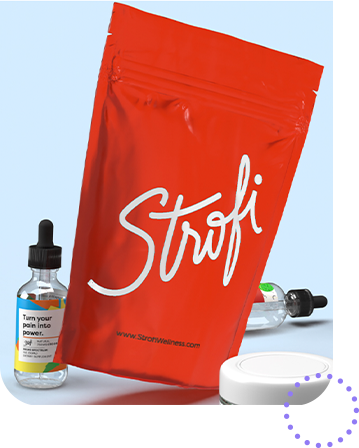Are You An eCommerce Owner? Read This To Take Your Business To The Next Level!
If you manage or own an eCommerce business then you understand the importance of growing your bottom line. If that’s been a bit of a struggle for you then we’ve got some tips that could help you build a steady stream of visitors and eventually customers. Try implementing some of these strategies below to watch your profits soar!
Build Your Brand
The most successful brands are the ones that have a clearly defined look and system of values and this should be one of your top priorities as an eCommerce brand. The sheer volume of products available online means you have to stand out —

the most memorable companies are truly unique. Too often do we see brands going straight to the bottom of the funnel before building at the top.
Let’s take a look at Nike as an example. Their signature swoosh logo is iconic and easily recognized within seconds. Their slogan — “Just Do It” — has been completely enmeshed into the brand’s culture. People know Nike — they’re familiar. Familiarity breeds comfortability which adds to developing loyal customers. Human beings are wired to choose what’s familiar — so your goal as an eCommerce site owner is to make sure you can become a familiar face.
Consistency is key! How you create your visual identity, your web appearance, and how you behave on Social Media has to have continuity — these are all important factors that will help create that sense of familiarity. Once established, sticking to your brand guidelines is important but if you can maintain it, having a specific aesthetic will pay off in the long run as consumers will know what to expect and feel like they’re involved.
Email Marketing Provides the Highest Return on Investment
If you’re not marketing with email then you’re missing out on one of the best methods for driving traffic to your site and increasing your sales. On a generous average, only 3% (or less) of users make a purchase their first time visiting a site (link-https://www.smartinsights.com/ecommerce/ecommerce-analytics/ecommerce-conversion-rates/). That’s an incredibly small number when you put it into perspective. Repeat visitors, however, are more than two times as likely to buy something. So how do you get them back to your site? Targeted emails, drip campaigns, and well-executed automation flows (like abandoned cart emails — more on that below).
So how do you build that email list? There are a few key ways. Having users provide their email at checkout is great for customer retention but for prospecting new buyers, you can place email submission forms in strategic places, utilize popups, or collect emails through giveaways and other promotions. Klaviyo is a great platform (link: https://www.klaviyo.com/partner/signup?utm_source=0010V00002OdkE1&utm_medium=partner) for online brands to get the most out of their own data.
Once you’ve populated an email list, it’s time to aim for the correct targets. These days, it’s possible to set up email automation and flows so an email land in the inboxes of relevant subscribers. You’ll want to create templates for a variety of customer behaviors like:
- Visiting your site without buying
- Placing items into their cart without checking out
- Subscribing to your email list
- Making a new purchase
- Cross-sell & up-sell products
- Encouraging product reviews (this itself is another topic entirely!)
The customization of these emails doesn’t have to stop there, either. Targeting customers with relevant emails tailored to their experience with you allows you to get more contextual with them, rather than making it seem like it’s the same, templated email they’ve seen ten times over. Remember, disruption and convenience are key elements for buyer engagement.
Prioritize Obtaining Product Reviews
Word of mouth is still a powerful marketing tool, but it’s up to you to maintain it in a positive direction. At any given moment, the potential reach of the internet is limitless. That said, it’s important to consistently give each consumer a positive experience so they only have good feedback to share.

If you don’t have any reviews, you’re lacking in what we call “social proof” that breaks down common new customer barriers. Get the conversation going by collecting them! How? That’s pretty easy, actually. Most people want to tell you their opinion — you’ve just got to provide them a place to do so.
Sending an email to anyone who makes a purchase and asking for a review is one efficient way to keep those testimonials and accolades coming in. Another strategy is to simply provide an easy to find place on your site where customers can leave a comment.
Once those reviews start rolling in, find a way to leverage them in your other marketing efforts. For example, Facebook can leverage your customer audience and match them with other people who are more likely to buy from you and share other interests. We’ve learned how to maximize this at SAMA Labs. (link:https://www.sama-labs.com/)
Make Sure Your Site Is Mobile Friendly
A majority of shoppers today are making purchasing decisions right from the palm of their hands. Our smartphones make browsing, ordering, making returns, and so much more easier with apps and user-friendly websites. However, nothing will send customers running for the hills faster than a site that’s not optimized for viewing on mobile.
Some factors to consider:
- Is the site performing fast mobile?
- Is the site easy to navigate on most common smartphone resolutions? (link:https://en.wikipedia.org/wiki/Comparison_of_high-definition_smartphone_displays)
- Is the checkout process simple (think Amazon simple)?
- Would any website features be frustrating to use on a phone (custom products, variables)?

Keeping your mobile-based customers in mind will ensure you don’t lose a chance at converting a sale because your site wasn’t mobile-optimized. You can also refer to Google’s free PageSpeed Insights tool (link:https://developers.google.com/speed/pagespeed/insights/) to get a gauge on how things perform on both desktop or mobile.
That’s it!
We hope this first of many soon-to-come segments got you thinking about what your brand could be missing out on. We’ll start getting deeper and into more advanced things, like how to tackle Facebook, Instagram & Google specifically in our next article.





